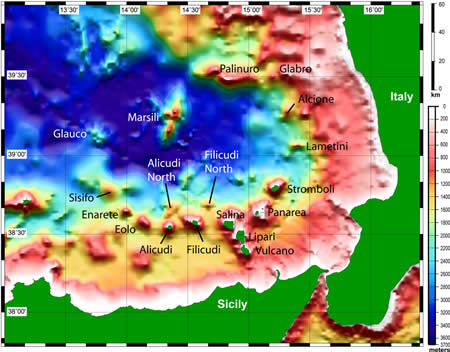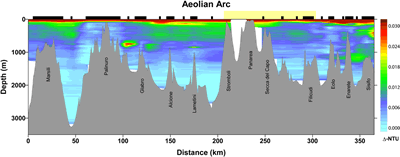2007 Aeolian Arc
Island arcs (those not bounded by ocean crust) are the largest class of volcanic arcs on the planet, yet remain virtually unexplored for hydrothermal activity. In November 2007 we conducted a systematic exploration for hydrothermal venting from the submarine volcanoes of the Aeolian arc and Marsili back-arc basin, in the deep waters of the Mediterranean Sea. On 26 CTD casts we collected light-scattering, methane, pH, and 3He/4He isotope ratio data over 10 submarine edifices. Our results are the first to confirm active discharge on Marsili, Enarete, Eolo, Sisifo, and Secca del Capo. We also confirmed earlier indications of hydrothermal venting at Palinuro. Samples collected over Lametini, Filicudi North, Alicudi North, and Alcione suggested either no, or very weak, hydrothermal activity.
Lupton, J., C. de Ronde, M. Sprovieri, E.T. Baker, P. P. Bruno, F. Italiano, S. Walker, K. Faure, M. Leybourne, K. Britten, and R. Greene (in review), Active hydrothermal discharge on the submarine Aeolian Arc: New evidence from water column observations, J. Geophys. Res.


